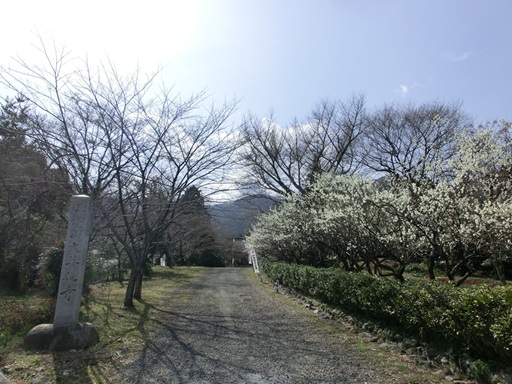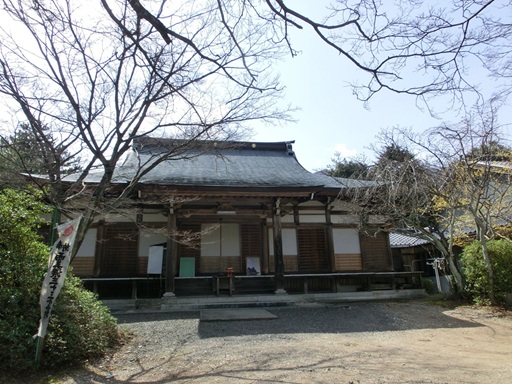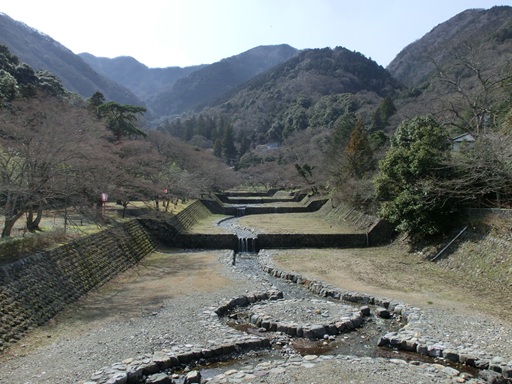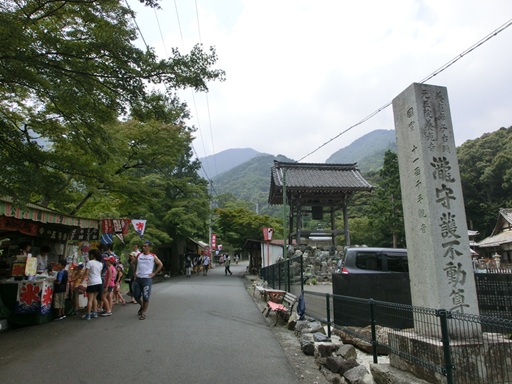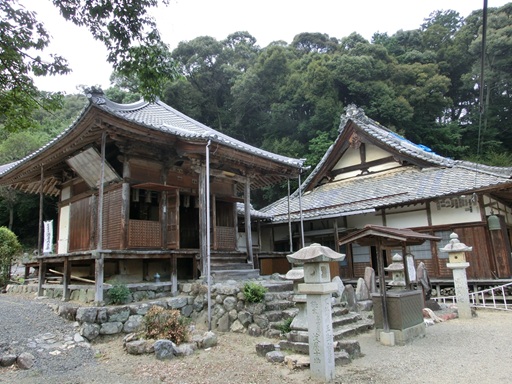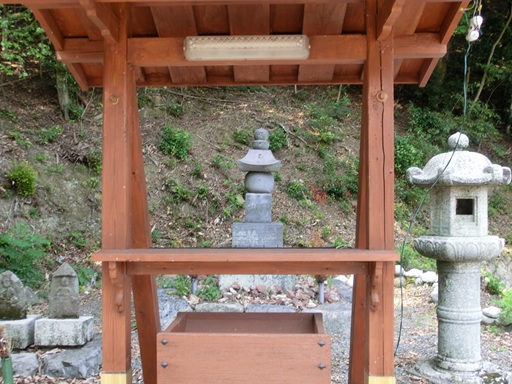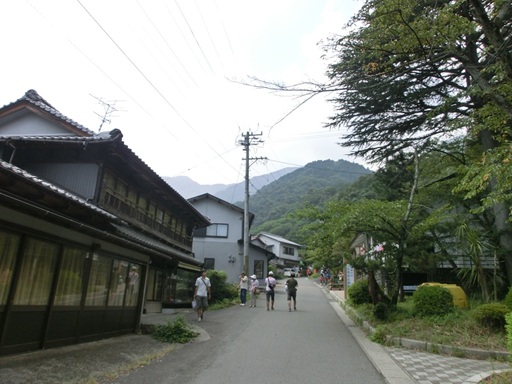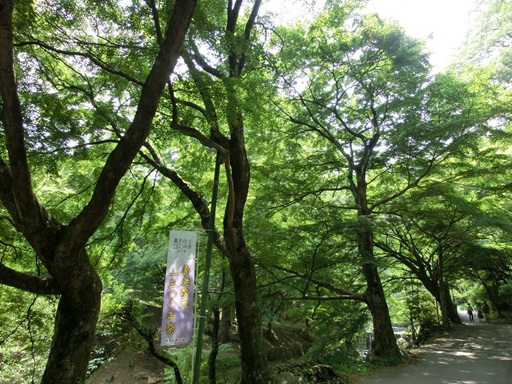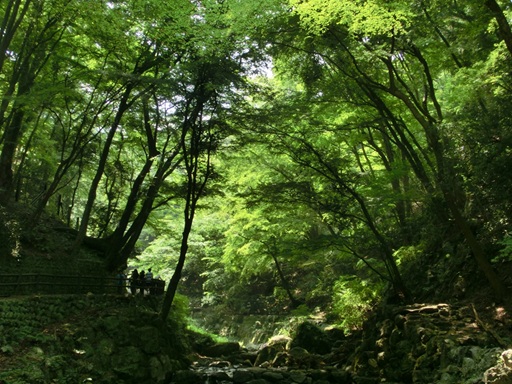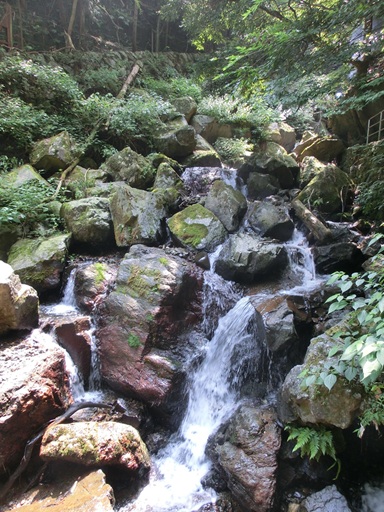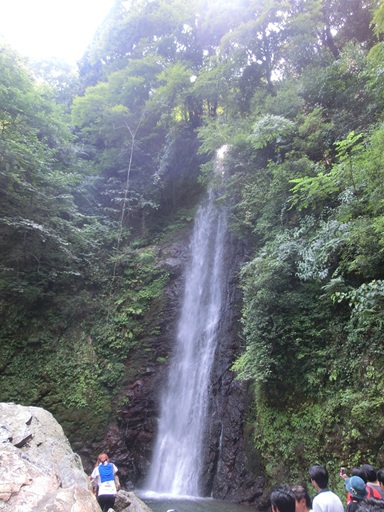|
Yoro Fall, Gifu Prefecture
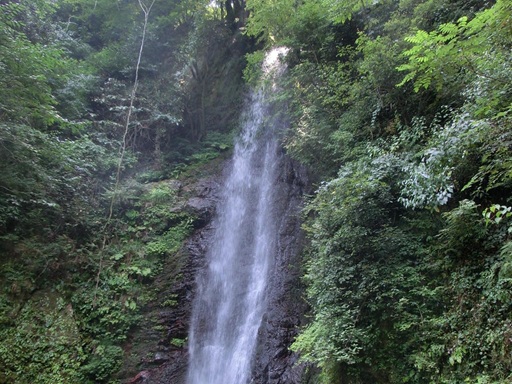
Yoro is well-known as "Yoro" Filial Piety Legend. It was in the eighth century. It is said that there was a poor woodcutter named Genjounai in the area of Yoro. He supported his elderly father, who loved alcohol, and would buy Japanese "sake" on his way home from work for his father to drink. One day, Genjounai slipped and fell in the mountains, and noticed a spring of water that smelled of Japanese sake. From that day on, Genjounai would draw this sake home with him. Emperor GENSHO heard this story and visited the area in 717. After bathing in the sacred spring, she was completely cured of her illness. Delighted by this, Emperor GENSHO changed the era name to "Yoro". In March, 2012, after visiting Tado Taisha Shrine, I took a train on the Yoro Railway Line to Yoro. In front of Yoro Station, you will find a statue of Genjounai and a sign explaining the "Yoro Filial Piety Legend". 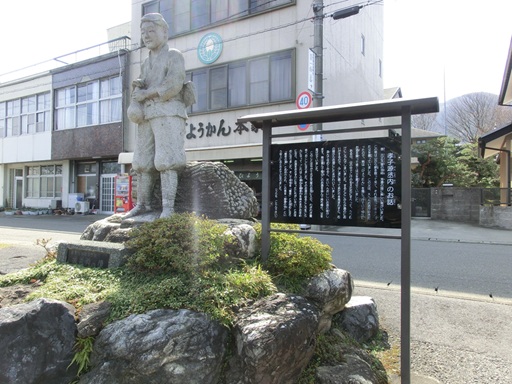
The legendary Yoro Falls, where the water from the falls turned into Japanese sake, is located about 3.5km west of the station. On the way, you will find Dai-Bodaiji Temple. |
